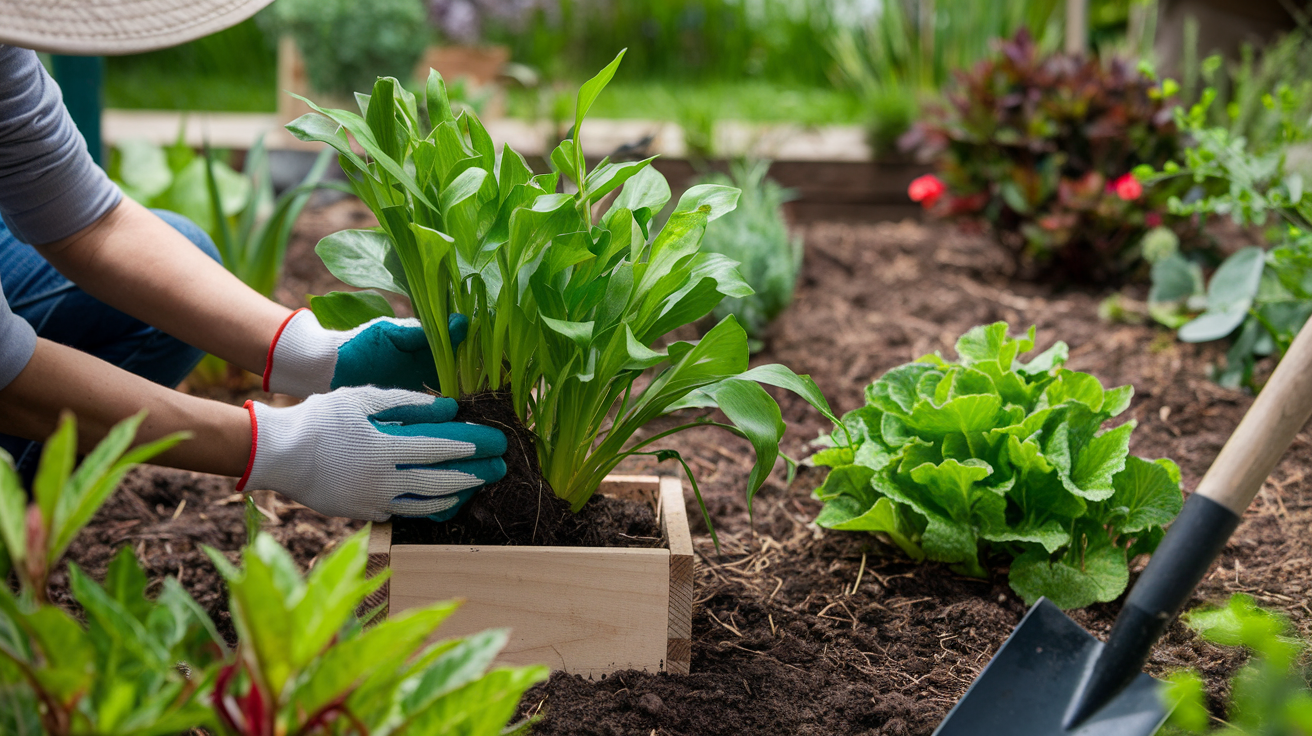Welcome to Rhys Garden, your trusted source for all things gardening. Today, we’re diving into the enchanting world of irises and exploring the optimal time for transplanting these elegant beauties. Whether you’re a seasoned gardener or just starting your horticultural journey, understanding the best time to transplant irises can make all the difference in nurturing a thriving, colorful garden.
Understanding Iris Plants and Their Growth Cycle
Before we delve into the specifics of transplanting, let’s take a moment to appreciate the iris and its growth patterns. These stunning perennials are beloved for their sword-like foliage and intricate, often fragrant blooms that come in a rainbow of colors.
Types of Irises
Irises are a diverse group of plants, with over 300 species. The most common types grown in gardens include:
- Bearded Irises
- Siberian Irises
- Japanese Irises
- Dutch Irises
Each type has its own specific needs, but general transplanting guidelines often apply across varieties.
The Iris Growth Cycle
Irises typically follow a predictable growth cycle:
- Spring: New growth emerges
- Late spring to early summer: Flowering period
- Summer: Active growth continues
- Fall: Growth slows, plants prepare for dormancy
- Winter: Dormant period
Understanding this cycle is crucial for determining the best time to transplant.
The Ideal Time for Iris Transplanting

Now, let’s address the burning question: When is the best time to transplant irises? The answer, like many aspects of gardening, depends on several factors, including your climate and the specific type of iris you’re working with.
Late Summer to Early Fall: The Golden Window
For most iris varieties, the optimal time for transplanting falls between late summer and early fall. This period, typically from late July to mid-October, offers several advantages:
- Post-Blooming Recovery: By this time, irises have completed their blooming cycle and have had time to store energy in their rhizomes.
- Cooler Temperatures: The milder weather reduces transplant shock and allows roots to establish before winter.
- Adequate Time for Root Development: Transplanting now gives irises enough time to develop a strong root system before the ground freezes.
- Moisture Balance: Fall often brings more consistent rainfall, helping newly transplanted irises settle in without the risk of summer drought stress.
Spring: A Secondary Option
While fall is generally preferred, spring can be a suitable time for iris transplanting in some cases:
- Missed Fall Window: If you didn’t get a chance to transplant in fall, early spring can work.
- Warmer Climates: In regions with mild winters, spring transplanting may be equally successful.
- Container-Grown Irises: These can often be transplanted successfully in spring.
Factors Influencing Transplant Timing
Several factors can influence the best time to transplant your irises:
Climate Considerations
Your local climate plays a significant role in determining the ideal transplant window:
- Cold Climates: Aim for earlier in the fall to allow sufficient establishment before frost.
- Hot Climates: You may have a longer window extending into late fall.
- Temperate Climates: The traditional late summer to early fall window typically works well.
Iris Variety
Different iris types may have slightly different optimal transplant times:
- Bearded Irises: Best transplanted in late summer to early fall.
- Siberian and Japanese Irises: Can be transplanted in early spring or fall.
- Dutch Irises: Often planted in fall as bulbs.
Plant Health and Maturity
Consider the current state of your iris plants:
- Overcrowded Clumps: These should be divided and transplanted every 3-5 years.
- Declining Bloom Production: A sign that division and transplanting may be needed.
- New Acquisitions: Bare-root irises are often best planted in fall.
How to Prepare for Iris Transplanting
Proper preparation is key to successful iris transplanting. Here’s what you need to do:
Tools and Materials
Gather the following:
- Garden fork or spade
- Sharp, clean knife
- Pruning shears
- Compost or well-rotted manure
- Bone meal or superphosphate
- Garden gloves
- Watering can or hose
Site Selection
Choose a new location that offers:
- Full sun (at least 6 hours daily)
- Well-draining soil
- Adequate space for growth
Soil Preparation
- Test soil pH (irises prefer slightly acidic to neutral soil, pH 6.0-7.0)
- Amend soil with compost to improve drainage and fertility
- Add bone meal or superphosphate to encourage root development
Step-by-Step Iris Transplanting Guide
Now that we’ve covered the best timing and preparation, let’s walk through the transplanting process:
Lifting the Iris
- Water the plant area a day before digging to soften the soil.
- Use a garden fork to gently lift the entire iris clump.
- Shake off excess soil to expose the rhizomes.
Dividing the Rhizomes
- Inspect rhizomes for signs of disease or pest damage.
- Use a clean, sharp knife to divide the rhizomes, ensuring each division has at least one fan of leaves.
- Trim the leaves to about 6 inches to reduce transpiration.
Planting in the New Location
- Dig holes wide enough to accommodate the rhizomes and roots.
- Create a small mound in the center of each hole.
- Place the rhizome on the mound with roots spread down the sides.
- Cover with soil, leaving the top of the rhizome exposed.
- Space plants 12-24 inches apart, depending on variety.
Watering and Mulching
- Water thoroughly after planting.
- Apply a light layer of mulch, keeping it away from the rhizomes to prevent rot.
Post-Transplant Care
Proper care after transplanting is crucial for iris establishment:
Watering
- Keep soil consistently moist but not waterlogged.
- Reduce watering as temperatures cool in fall.
Fertilizing
- Hold off on fertilizing immediately after transplanting.
- Apply a low-nitrogen fertilizer in early spring of the following year.
Winter Protection
- In cold climates, apply a light layer of straw or evergreen boughs after the ground freezes.
- Remove this protection in early spring.
Common Questions About Iris Transplanting
Let’s address some frequently asked questions about iris transplanting:
Q: Can I transplant irises while they’re blooming?
A: It’s best to avoid transplanting during bloom time. The plant needs energy for flowering, and transplanting can disrupt this process.
Q: How often should I divide and transplant my irises?
A: Most irises benefit from division every 3-5 years, or when the center of the clump becomes woody and unproductive.
Q: What if I miss the fall transplanting window?
A: If you miss fall, wait until early spring before new growth begins. In mild climates, you may be able to transplant during winter dormancy.
Q: How deep should I plant iris rhizomes?
A: Plant rhizomes just below the soil surface, with the top exposed. In hot climates, you can plant them slightly deeper to protect from heat.
Q: Can I transplant irises in containers?
A: Yes, container-grown irises can be transplanted almost any time of year, but spring or fall is still ideal.
Expert Tips for Successful Iris Transplanting
To ensure your iris transplanting efforts yield beautiful results, consider these expert tips:
- Timing is Everything: Aim for transplanting 6-8 weeks before the first frost in your area.
- Size Matters: When dividing, ensure each rhizome section is at least 3-4 inches long with healthy roots.
- Prevent Disease: Dust cut rhizome surfaces with sulfur to prevent rot.
- Proper Spacing: Allow adequate space between plants for air circulation, which helps prevent disease.
- Labeling: Use plant markers to keep track of iris varieties and colors.
- Patience is Key: Don’t expect blooms the first year after transplanting; irises often need a full growing season to establish.
- Companion Planting: Consider planting irises with complementary perennials that bloom at different times to extend your garden’s seasonal interest.
The Benefits of Timely Iris Transplanting
Understanding and implementing proper iris transplanting techniques offers numerous benefits:
- Rejuvenated Plants: Division and transplanting reinvigorate older clumps, promoting healthier growth and more abundant blooms.
- Expanded Garden: Dividing irises allows you to expand your iris collection or share with fellow gardeners.
- Improved Garden Design: Transplanting provides an opportunity to rearrange your garden layout for better aesthetic appeal.
- Disease Prevention: Regular division helps prevent overcrowding, which can lead to disease and pest issues.
- Enhanced Blooming: Properly spaced and transplanted irises often produce more impressive blooms.
Conclusion: Embracing the Art of Iris Transplanting
Mastering the art of iris transplanting is a rewarding aspect of gardening that can significantly enhance the beauty and health of your iris collection. By understanding the best timing, preparing adequately, and following proper techniques, you can ensure your irises thrive year after year.
Remember, while late summer to early fall is generally the ideal time for iris transplanting, factors like your specific climate, iris variety, and individual plant health should always be considered. Gardening is as much an art as it is a science, and with practice, you’ll develop an intuitive sense of when your irises are ready for their new homes.
At Rhys Garden, we believe in the joy of nurturing plants and creating beautiful outdoor spaces. Whether you’re transplanting a single iris or redesigning an entire garden bed, the process of working with these stunning flowers can be a deeply satisfying experience.

Related Posts
How to Germinate Orchid Seeds: A Beginner’s Guide to Growing
How to Germinate Lettuce Seeds: A Comprehensive Guide
The Ultimate Guide to Worms in Plant Soil: Friend or Foe?